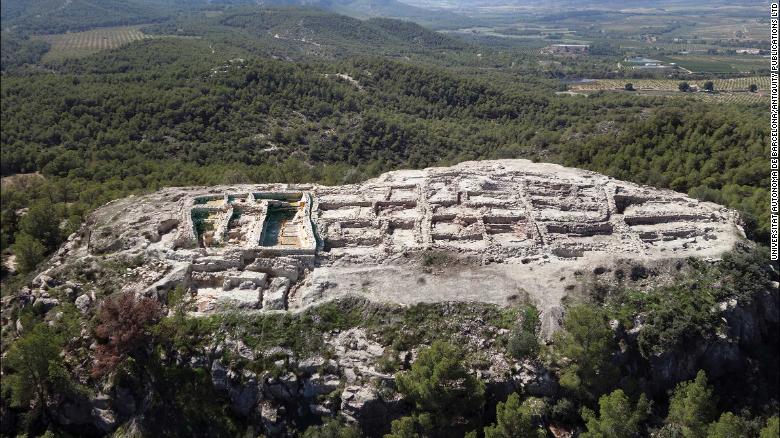Archaeologists working at an ancient complex in southeastern Spain say women probably held political power in the Bronze Age society that ruled the area 4,000 years ago — a sharp contrast with earlier views of the civilization.
Researchers said women of the ruling class may have been important in governing the El Argar society, the Research Group in Mediterranean Social Archaeoecology at the Universitat Autònoma de Barcelona said in a news release published Thursday.
The team analyzed grave goods found in a princely tomb in the La Almoloya site, in what is now Murcia.
The tomb, known as Grave 38, contained the remains of two individuals — a man between the ages of 35 and 40 and a woman between 25 and 30 — alongside around 30 valuable items, many of which were made from silver.
Most of the objects belonged to the woman, including jewelry such as bracelets, necklaces and earlobe plugs, and a silver diadem.
The items were first discovered in 2014, and researchers have now determined that the tomb sat below what was the governing hall of a palatial building.
This is the first time archaeologists have found evidence that the El Argar society was organized around these kinds of complexes, which had a political function.
Study co-author Cristina Rihuete, a professor of prehistory at UAB, told CNN that being buried under the governing hall would have legitimized the social position of those in the tomb.
Women formed part of the political elite in the highly hierarchical society, Rihuete said — and the implications are significant.
“The role of women in the past was much more important than we have dared to imagine,” she said, explaining that women in El Argar were able to have political power in their own right in a highly violent and exploitative society.
“This says a lot about the process of silencing that women have suffered since,” Rihuete added.
People tend to think that our history is accumulated, Rihuete said, but El Argar suffered societal collapse to the extent that subsequent civilizations had no memory of them.
“We lost all knowledge of these people,” said Rihuete, whose work over the past two decades has started to build a picture of life in El Argar.
The El Argar society ruled in the region from 2200 to 1550 BCE, developing into the first state organization in the western Mediterranean during the last two centuries of its existence, according to the news release.
Archaeologists compared the diadem found at La Almoloya with four others found at different tombs from the El Argar society, and found they were all very similar and very valuable.
“The big surprise is that they match a clear model,” even though they were found hundreds of kilometers apart, Rihuete said.
This means that the symbols of political power stayed the same across the extensive territory of the society, she added.
The fact that elite women were buried with such opulent funerary goods points to their important role in Argar society, according to researchers.
“In the Argaric society, women of the dominant classes were buried with diadems, while the men were buried with a sword and dagger. The funerary goods buried with these men were of lesser quantity and quality,” they said. “As swords represent the most effective instrument for reinforcing political decisions, El Argar dominant men might have played an executive role, even though the ideological legitimation as well as, perhaps, the government, had lain in some women’s hands.”
The couple found in the tomb died simultaneously, or around the same time, in the mid-17th century BCE. They weren’t related, and had a daughter together, who was buried nearby.
The team is planning further excavations at the site to try to expand our knowledge of El Argar, Rihuete said.
The research was published in the journal Antiquity.
>>>>





